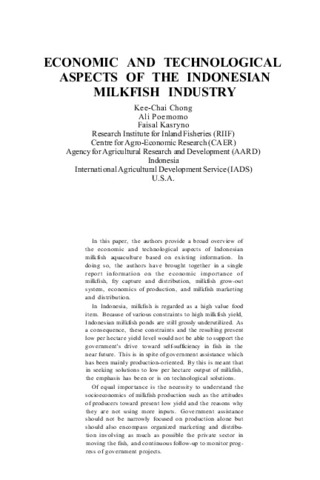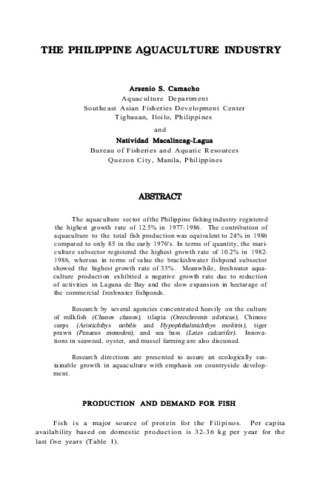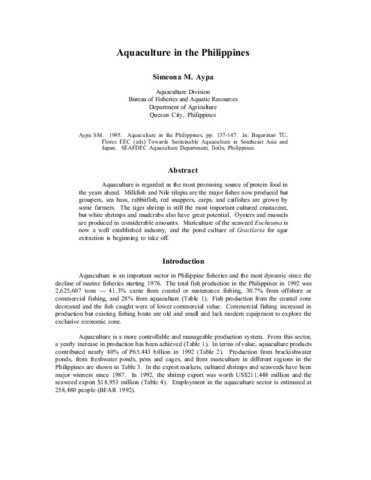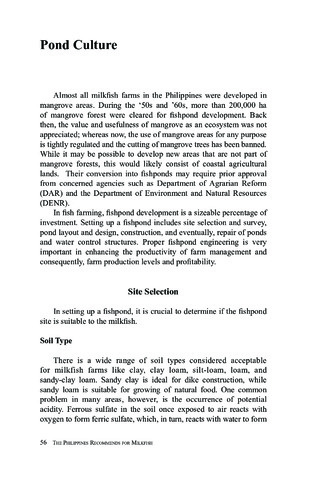Economic and technological aspects of the Indonesian milkfish industry
Share
ບົດຄັດຫຍໍ້
A broad overview is presented of the economic and technological aspects of Indonesian milkfish (Chanos chanos ) aquaculture covering information on the economic importance of milkfish, fry capture and distribution, milkfish grow-out system, economics of production, and milkfish marketing and distribution. In Indonesia, milkfish is regarded as a high value food item. Because of various constraints to high milkfish yield, Indonesian milkfish ponds are still grossly underutilized. As a consequence, these constraints and the resulting present low per hectare yield level would not be able to support the government s drive toward self-sufficiency in fish in the near future. Understanding socioeconomics of milkfish production such as the attitudes of producers toward present low yield and the reasons why they are not using more inputs is of importance. Government assistance should not be narrowly focused on production alone but should also encompass organized marketing and distribution involving as much as possible the private sector in moving the fish, and continuous follow-up monitor progress of government projects.
Suggested Citation
Chong, K-C., Poernomo, A., & Kasryno, F. (1984). Economic and technological aspects of the Indonesian milkfish industry. In J. V. Juario, R. P. Ferraris, & L. V. Benitez (Eds.), Advances in milkfish biology and culture: Proceedings of the Second International Milkfish Aquaculture Conference, 4-8 October 1983, Iloilo City, Philippines. (pp. 199-213). Metro Manila, Philippines: Published by Island Pub. House in association with the Aquaculture Department, Southeast Asian Fisheries Development Center and the International Development Research Centre.
ວິຊາ
Taxonomic term
Collections
Related items
Showing items related by title, author, creator and subject.
-
The Philippine aquaculture industry
Camacho, Arsenio S.; Macalincag-Lagua, Natividad (Aquaculture Department, Southeast Asian Fisheries Development Center, 1988)The aquaculture sector of the Philippine fishing industry registered the highest growth rate of 12.5% in 1977-1986. The contribution of aquaculture to the total fish production was equivalent to 24% in 1986 compared to ... -
Aquaculture in the Philippines
Aypa, Simeona M. (Aquaculture Department, Southeast Asian Fisheries Development Center, 1995)Aquaculture is regarded as the most promising source of protein food in the years ahead. Milkfish and Nile tilapia are the major fishes now produced but groupers, sea bass, rabbitfish, red snappers, carps, and catfishes ... -
[The Philippines recommends for milkfish:] Pond culture
Corre Jr., Valeriano L.; Saclauso, Crispino A.; Garcia, Yolanda T.; Salayo, Nerissa D.; The Milkfish Technical Committee 2016 (DOST-PCAARRD, 2016)






